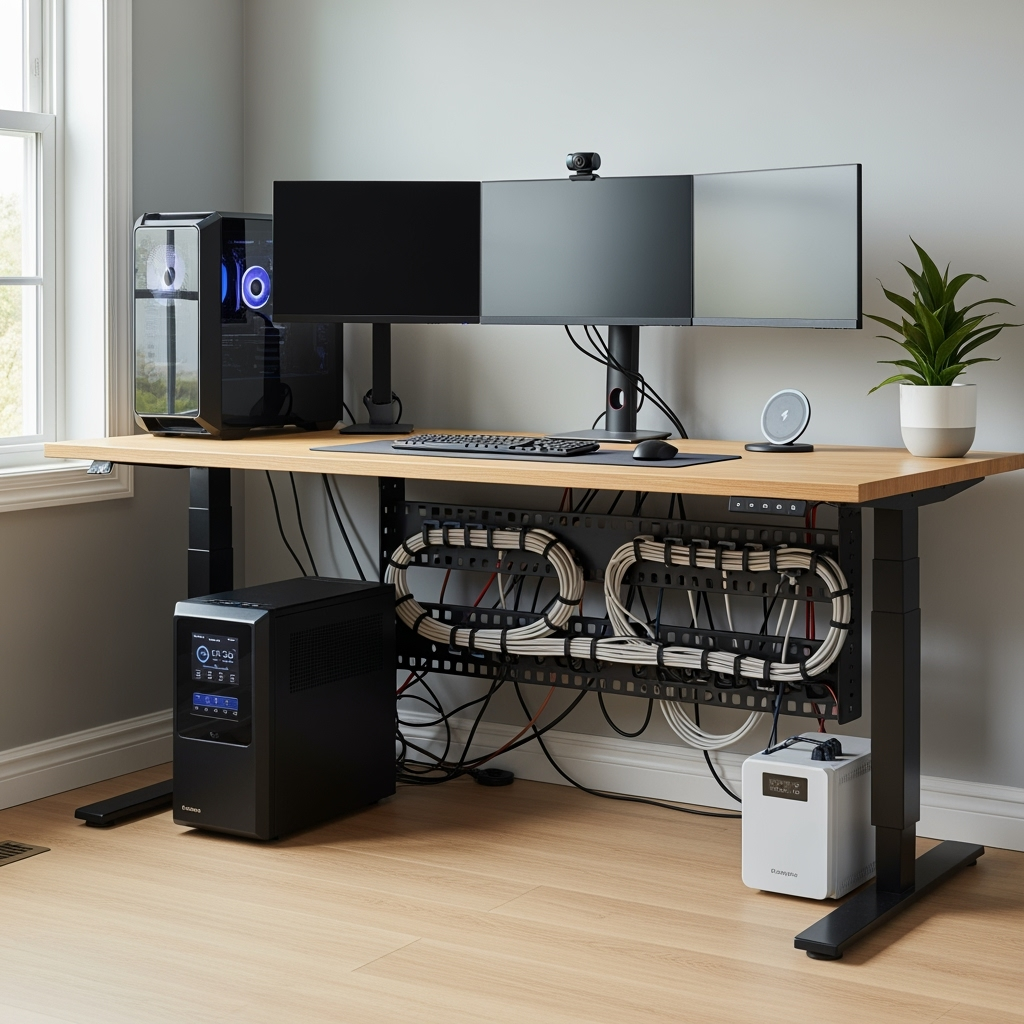In today’s remote work environment, power reliability isn’t just about keeping the lights on—it’s about maintaining your professional presence and productivity. This comprehensive guide will help you develop a robust power management strategy for your remote workspace, ensuring business continuity no matter what challenges arise.

Understanding Your Power Needs
Before implementing any power solution, it’s crucial to assess your essential equipment and their power requirements:
- Computer and monitors
- Internet modem and router
- Professional lighting
- Phone and communication devices
- Backup drives and storage systems
Essential Power Backup Solutions
Create a multi-layered approach to power protection:
1. Uninterruptible Power Supply (UPS)
Invest in a professional-grade UPS system that provides:
- Immediate backup power during outages
- Surge protection for sensitive equipment
- Time to save work and properly shut down systems
2. Portable Power Stations
Consider compact power stations for:
- Extended backup power for essential devices
- Mobility when working from different locations
- Emergency lighting and device charging
Climate-Controlled Storage Solutions
Protect your power backup equipment by utilizing climate-controlled storage for:
- Backup batteries and power banks
- Seasonal power equipment
- Sensitive electronic components
- Emergency power supplies
Creating a Power Management Plan
Develop a comprehensive strategy that includes:
Regular Maintenance
- Monthly testing of backup systems
- Battery health monitoring
- Equipment rotation and updates
Emergency Protocols
- Clear procedures for power outages
- Communication plans with clients and team members
- Backup work location options
Smart Storage Organization
Implement these storage best practices for your power equipment:
- Label all equipment and cables clearly
- Create an inventory system for backup supplies
- Maintain proper ventilation in storage areas
- Use moisture-resistant containers for protection
Professional Considerations
Keep your remote work setup professionally viable with:
Power Redundancy
- Multiple backup power sources
- Alternate internet connections
- Distributed power storage solutions
Professional Appearance
- Cable management systems
- Clean power setup integration
- Backup lighting solutions
Managing Temperature-Sensitive Equipment
Protect your power equipment investment by:
- Utilizing climate-controlled storage for backup batteries
- Monitoring temperature and humidity levels
- Implementing proper ventilation systems
- Regular cleaning and maintenance
Long-Term Storage Considerations
For equipment not in regular use:
- Proper battery storage techniques
- Regular rotation of stored equipment
- Documentation of storage locations and conditions
- Accessibility planning for quick deployment
Conclusion
A well-planned power management strategy is essential for remote work success. By implementing these storage and organization solutions, you can maintain professional productivity while protecting your valuable equipment investment. Remember to regularly review and update your power planning strategy as your remote work needs evolve.










Leave a Reply